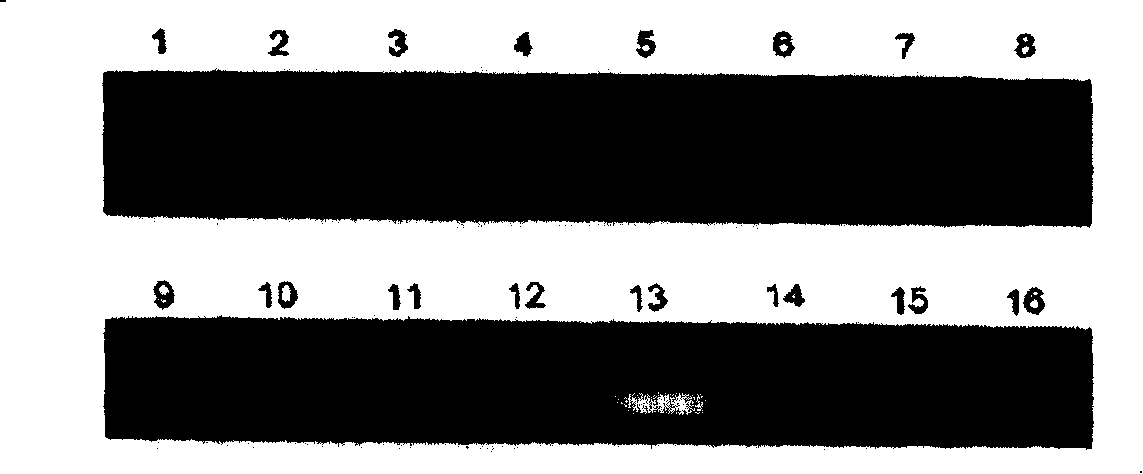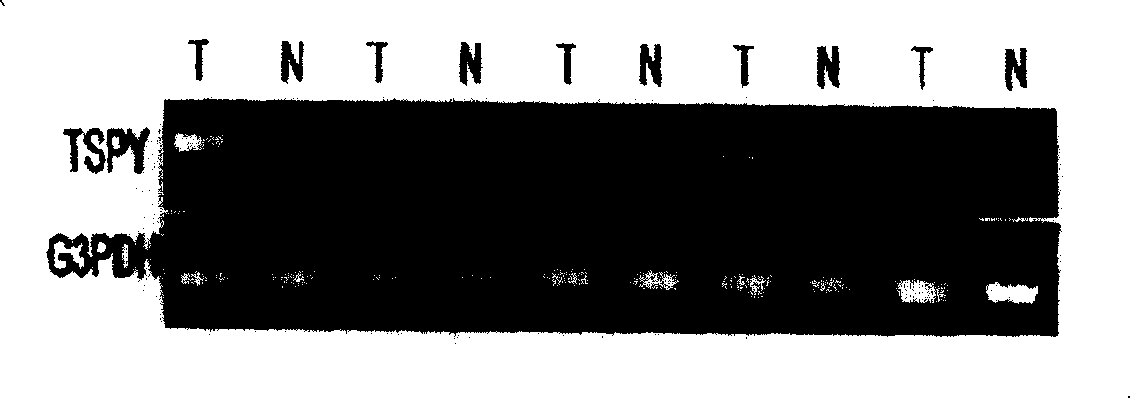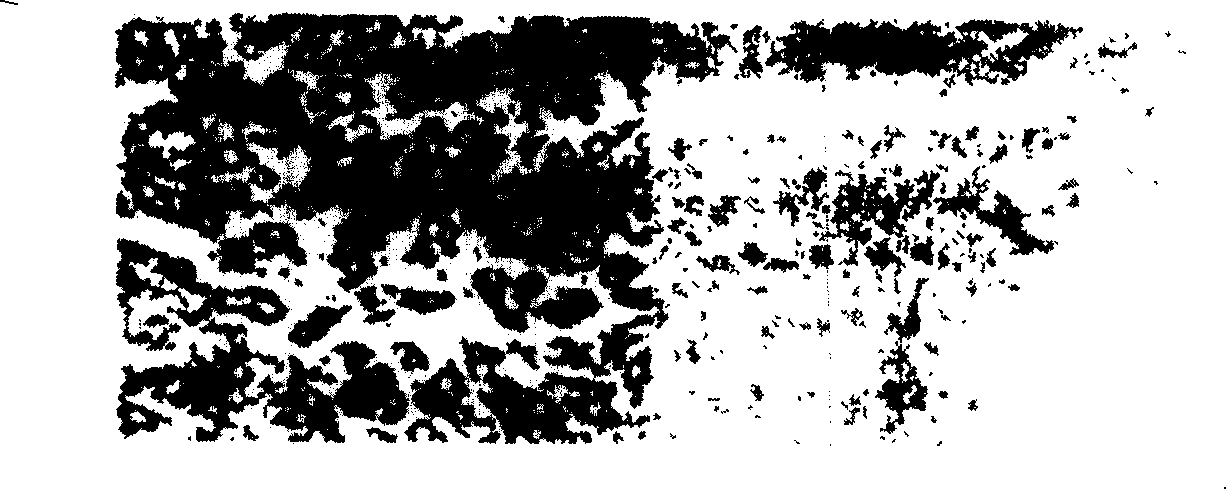Tumour antigen protein and tumour antigen peptide
A tumor antigen peptide, tumor antigen technology, applied in the field of tumor antigen protein and tumor antigen peptide for the treatment of liver cancer, can solve the problems of low survival rate, poor effect and prognosis of liver cancer patients, and achieve the effect of preventing and treating tumor cell metastasis
- Summary
- Abstract
- Description
- Claims
- Application Information
AI Technical Summary
Problems solved by technology
Method used
Image
Examples
Embodiment 1
[0028] Embodiment 1, cDNA microarray (cDNA microarray) analysis
[0029] In order to find the genes differentially expressed in liver cancer tissues and adjacent tissues, we analyzed the differential expression of more than 18,000 genes in liver cancer tissues and adjacent tissues using the commercially available AFFYMETRIX human genome U-133A chip. In the data analysis, we found that a testis-specific gene TSPY was highly expressed in liver cancer tissues. The accession number of the TSPY gene in the gene library was TSPYNM 003308, which had the nucleotide sequence shown in Sequence 2.
Embodiment 2
[0030] Embodiment 2, analyze the expression of TSPY gene with the method for RT-PCR
[0031] cDNA of 16 commercial human normal tissues from the biotechnology company CLONTECH (spleen, prostate, testis, ovary, small intestine, large intestine, autocytic cells, heart, lung, liver, brain, kidney, pancreas, placenta, skeletal muscle, thymus) , cDNA from cancer tissues and matched paracancerous tissues of 57 liver cancer patients, cDNA from 19 renal cancer tissues and matched paracancerous tissues, and cancer tissues and paired paracancerous tissues from 13 lung cancer patients The cDNA of the tissue, the cDNA of the cancer tissues and the paired adjacent tissues of 10 gastric cancer patients, and the cDNA of the cancer tissues and the matched adjacent tissues of 8 bladder cancer patients were used to detect the expression of TSPY gene in normal tissues and normal tissues. expression in tumor tissues.
[0032] Conditions for RT-PCR in the present invention: DNA polymerase from Sh...
Embodiment 3
[0033] Embodiment 3, in situ hybridization
[0034] In order to confirm the cell localization of TSPY and further prove the correlation between the gene and liver cancer, in situ hybridization was carried out with paraffin sections of liver cancer tissues.
[0035] The PCR product amplified with the upstream primer CAGGGCTTCTCATTCCACTC and the downstream primer CCATCATATTCAACTCAACAACTGG was constructed into a plasmid (the standard plasmid in Real time PCR), and the sequence was confirmed to be correct. Sense and antisense RNA probes were labeled with DIG RNA labeling Kit (T7 / SP6) (Roche) according to the kit instructions.
[0036] The brief operation steps are as follows: Prepare 6 μm thick paraffin sections, after dewaxing and hydration treatment, treat with 0.2M hydrochloric acid at room temperature for 10 minutes, wash with PBS for 2×5 seconds, digest with 20 μg / ml proteinase K at 37°C for 30 minutes . Wash 2 x 5 sec with PBS and fix with 4% paraformaldehyde for 10 min. ...
PUM
 Login to View More
Login to View More Abstract
Description
Claims
Application Information
 Login to View More
Login to View More - R&D
- Intellectual Property
- Life Sciences
- Materials
- Tech Scout
- Unparalleled Data Quality
- Higher Quality Content
- 60% Fewer Hallucinations
Browse by: Latest US Patents, China's latest patents, Technical Efficacy Thesaurus, Application Domain, Technology Topic, Popular Technical Reports.
© 2025 PatSnap. All rights reserved.Legal|Privacy policy|Modern Slavery Act Transparency Statement|Sitemap|About US| Contact US: help@patsnap.com



